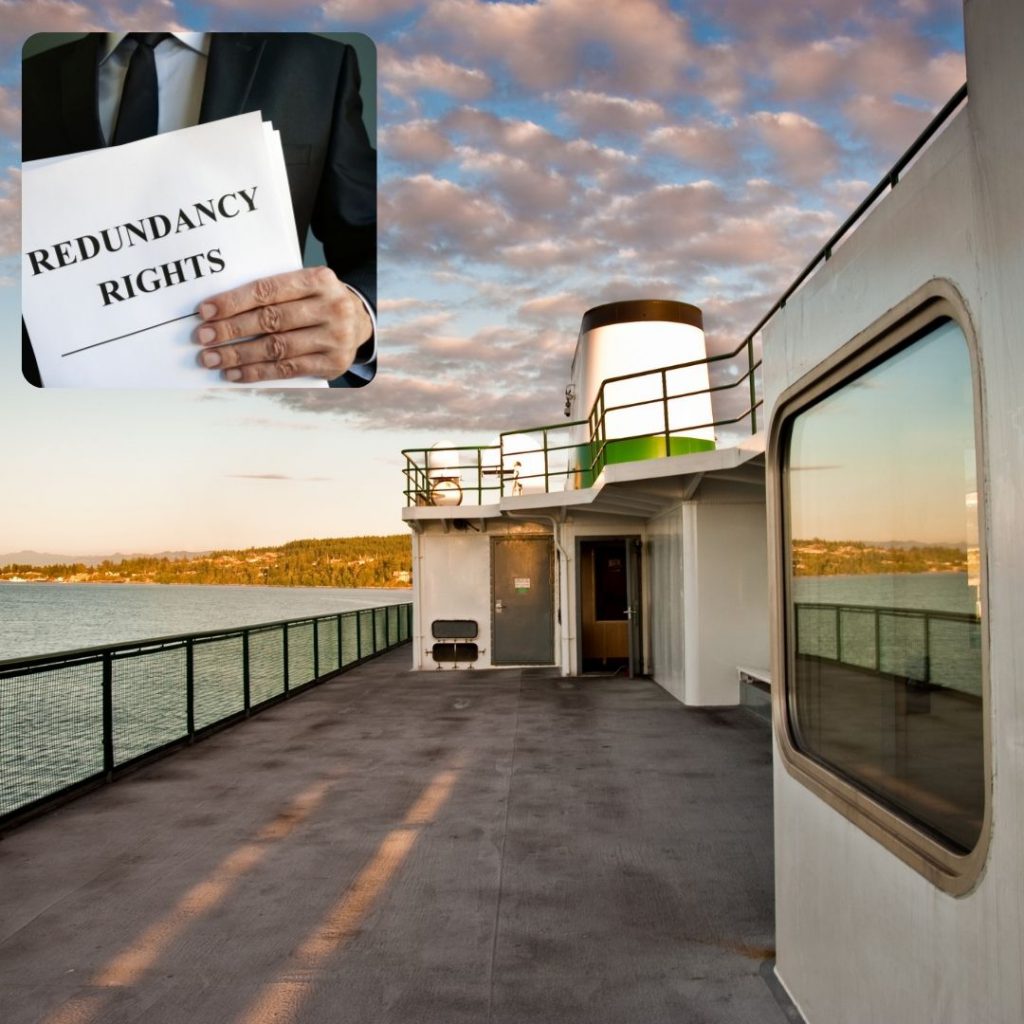
Recent news about staff redundancies and disruption to ferry journeys on P&O ferries may have left staff and customers with questions about what it means for them.
On Thursday 17th March 2022, P&O ferries released a statement that all UK sailings had been suspended, pending a major announcement.
The announcement was made that 800 crew members had been made redundant with immediate effect, with new agency workers in place to handle operations moving forward. Many workers who were terminated are now disputing the redundancy process used with P&O, with trade unions involved.
Additionally, a number of ferry services were cancelled, with consumers left wondering about their rights.
So, what are our rights in relation to redundancy? What is the process that employers should follow?
P&O have issued a statement that members of staff who have been laid off will be compensated for the lack of notice with “enhanced compensation packages”, but regulations on redundancy states that employees must be consulted during the process. This raises questions around the redundancies being made by P&O as potentially being unfair.
advice.scot have put together a guide to redundancy: the process and how it works in practical terms.
What is Redundancy?
In broad terms, redundancy is when the position that someone is employed for is no longer required by the employer.
There are 3 main reasons an employer can make you redundant:
- Closure of the workplace.
- Reduction in the size of the workforce – this generally may be for whatever reason, there doesn’t need to be less work to be done.
- Closure of the business.
Redundancy can only apply when the position(s) itself is to be removed. Simply modernising or renaming the position is insufficient.
Notice
- If your employment has lasted between 1 month and 2 years, the notice period is 1 week.
- If your employment has lasted between 2 and 12 years, the notice period is 1 week for every year of service (e.g., 7 weeks for 7 years).
- If your employment has lasted for 12 years or more, the notice period is 12 weeks.
Time off to look for work during the notice period
If you have worked for the employer for at least 2 years by the end of your notice period, you can take some time off to search for a new job. Your employer must pay you 40% of one week’s pay, regardless of how much time you take.
Time can be taken off at any time in normal working hours. You have no obligation rearrange your work hours to make up the time off. How long you can take will depend on your circumstances.
If you work for the police or armed forces, or you work on a fishing boat and get paid a share of its profits, you cannot take time off in this way.
Redundancy Meeting
Your employer must meet you individually at least once before they tell you their final redundancy decision. At this meeting you should get to discuss:
- why redundancies are needed.
- why you are being considered.
- what other suitable jobs are available to you.
- any questions you have about the redundancy process and what will happen next.
- Why you think that you should not be made redundant (if you believe so).
What if I am on Holiday, sick, or Maternity or Paternity leave?
If you are away on leave of any kind, your employer still has an obligation to meet with you individually. They should do this after your leave is finished but if you are on maternity leave, they must ensure that they do not tell you after everyone else.
If you are on maternity leave, your employer should make sure the meeting does not negatively impact your pregnancy (e.g., calling you if you are unable to travel). If you have agreed with your employer to have “Keeping in Touch” days, which allow you to work without interrupting your maternity leave. That way, you will be paid for the time that the meeting takes place.
Consultation
Your employer should try to give as much warning as possible of potential redundancies. They should hold a Consultation where alternative options are explored.
If there are 20 or more redundancies being made in the workplace within 90 days, there’s a statutory right to collective consultation. Your employer should initially talk with the recognised union if there is one or employee representatives if not.
Your employer should give your representatives written details of:
- why they’re making redundancies
- how many people they’re making redundant
- which areas of the business they’ll choose people from
- how they’ll choose who to make redundant
- how they’ll work out redundancy payments
- what process and timeline they’ll follow
- Employers should also consult individual employees, it could be unfair if employers only consult unions and not individuals.
If consultation in a large scale redundancy doesn’t take place, the union / representatives of the workforce can make a claim for the employees to be compensated. Individuals can only make a claim if there are no representatives/union. The union should make the claim for all employees affected, not just its members.
Selection of Who will be Dismissed
At the 1st stage, the employer must choose a fair pool of employees to choose from who may be made redundant. When a reasonable pool has been decided, the employer can then use suitable selection criteria to select who’ll be made redundant.
The selection criteria must not discriminate, and the deciding factors should be measurable in some way so a fair comparison of employees can be made without bias. Often a multiple selection criteria is used considering some of the following:
- length of service (as long as it doesn’t discriminate against groups of people with protected characteristics)
- productivity
- timekeeping
- the employee’s ability to adapt
- future needs of the business
- attendance (this should be judged over a long period of time).
Decisions should be made using a structured scoring process, using an open mind, based upon substantial evidence. The expectations on an employer will depend on the size of the organisation and the administrative resources at hand but they must still follow a fair procedure.
Pay
Your employer must pay you statutory redundancy pay if you are an employee and have worked for that employer for at least 2 years. The amount depends on your length of service and age:
- half a week’s pay for each full year of service if you are under 22 years old.
- one week’s pay for each full year (up to a maximum of twenty) you were between 22 and 41 years old.
- one and half week’s pay for each full year (up to a maximum of twenty) you were 41 years old or older.
If your contract entitles you to contractual redundancy pay, you should be paid at that rate as opposed to the statutory rate. The contractual rate cannot be lower than the statutory one.
You must also be paid your normal wage over the course of your redundancy notice period. Your employer can choose whether you work during this period or if you are to leave at the end and receive pay in lieu of notice.
Appeals
You are always entitled to challenge your redundancy. If you wish to do so, look for a staff handbook or other evidence of a redundancy process. Enquire with your employer about a process to appeal the decision. If they do not have one, follow your employer’s grievance procedure if you want to take the matter further.
Your employer should hold an appeal meeting, where both you and they can present arguments about whether the redundancy should take place. You may take a companion (e.g., a trade union representative). If your employer accepts your argument, they can make an offer for you to take the job back. It is your decision whether to accept this offer.
If you are unhappy with the way the employer has handled your appeal, consider taking the matter to the Employment tribunal. The time limit for doing so is 3 months minus 1 day.
Discrimination
Discrimination is when you receive negative treatment due to the possession (or perceived possession) of a protected characteristic or others are given better treatment than you due to them not possessing protected characteristics you have. It is illegal for your employer to discriminate against you during any part of the redundancy process. This includes when they inform you that redundancy selection is taking place, selection for redundancy and offering suitable alternatives.
The following are protected characteristics:
- age
- disability
- gender reassignment
- marriage and civil partnership
- pregnancy and maternity
- race
- religion or belief
- sex
- sexual orientation
If you are being discriminated against, you can launch a grievance with the employer about it. You can take the matter to the employment tribunal within 3 months minus a day of the discrimination taking place.
You can access free, impartial advice on various topics, including employment and redundancy right from advice.scot by contacting 0808 800 9060 or by visiting www.advice.scot. Advice is available to everyone in Scotland, at no cost, regardless of personal circumstance.



